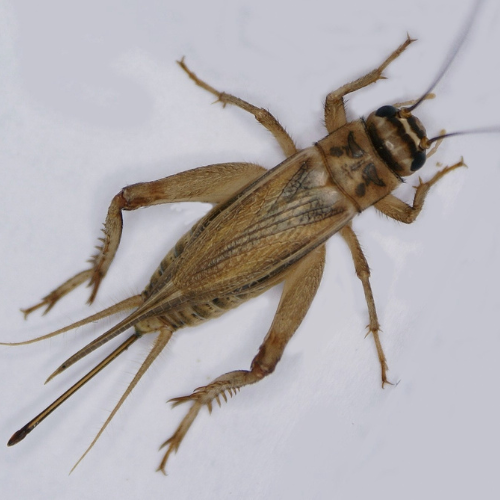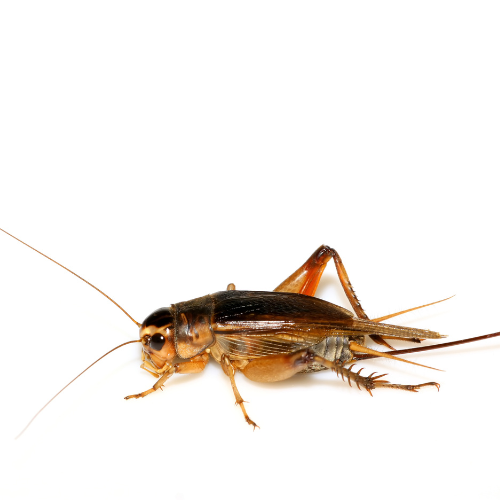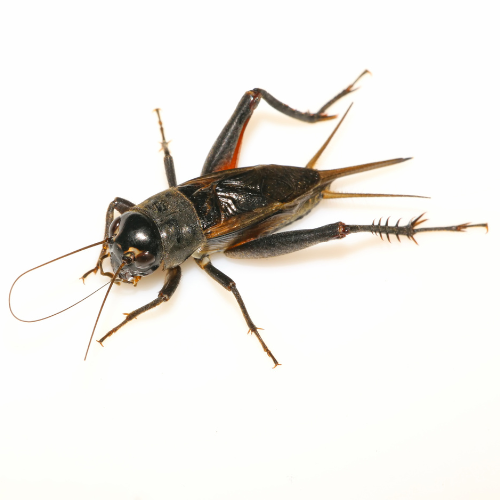House Cricket
Introduction to
House crickets are common insects known for their distinctive chirping sounds, which can be both comforting and annoying when they become too loud or invade homes. These crickets are often found in warm environments, including homes, where they can survive and reproduce. While house crickets play a role in the ecosystem by breaking down organic material, they can become pests when they damage fabrics, paper, and plants. This article explores the recognition, biology, habits, prevention, and professional handling of house crickets, providing a comprehensive guide to understanding and managing these noisy insects.
Recognition
House crickets are small to medium-sized insects, measuring about 3/4 to 1 inch in length. They have a light brown or yellowish-brown coloration with three dark bands on their heads. Their long, slender antennae and strong hind legs adapted for jumping are distinctive features. Male house crickets are known for their chirping sounds, which they produce by rubbing their forewings together to attract females. These crickets have a cylindrical body shape and are often found indoors, especially in warm, moist areas such as basements, kitchens, and near heating systems.
Biology
House crickets belong to the family Gryllidae and are native to Asia but have spread worldwide. They undergo incomplete metamorphosis, consisting of three stages: egg, nymph, and adult. Female house crickets lay their eggs in damp soil or organic matter. The eggs hatch into nymphs, which resemble small adults but lack wings. Nymphs go through several molts before reaching adulthood, a process that takes about two to three months. House crickets are omnivores, feeding on a variety of organic materials, including plants, dead insects, and household items like fabrics and paper. Their natural predators include birds, reptiles, and other insects.
Habits
House crickets are nocturnal and are most active during the night when they search for food and mates. They are attracted to light, which often brings them indoors through open windows and doors. During the day, they hide in dark, warm, and moist areas such as under appliances, in cracks and crevices, and in basements. House crickets are known for their loud and continuous chirping, produced by males to attract females. While they are not harmful to humans, their presence can become a nuisance, and they can cause damage by chewing on fabrics, paper, and plants.
Prevention
Preventing house crickets from entering your home involves eliminating their access points and reducing indoor attractants. Ensure that windows and doors are properly sealed with weather stripping or caulk, and repair any damaged screens. Reduce outdoor lighting or use yellow bulbs that are less attractive to insects. Keep your home clean and free of food crumbs and spills, which can attract crickets. Store fabrics and paper products in sealed containers to prevent damage. Dehumidify basements and other damp areas to make the environment less hospitable to crickets. Regularly inspect and maintain your home’s exterior to prevent entry points.
Professional
If house crickets become a persistent problem, professional pest control services can provide effective solutions. STL Pest Control offers comprehensive management plans to address house cricket infestations. Their experienced technicians will conduct a thorough inspection to identify entry points and areas of activity. They use targeted treatments, including baits and insecticides, to eliminate crickets and prevent their return. Additionally, STL Pest Control provides advice on long-term prevention strategies to keep your home cricket-free. Professional intervention ensures that house cricket problems are resolved quickly and efficiently, minimizing disruption and damage to your property.



Our Office









